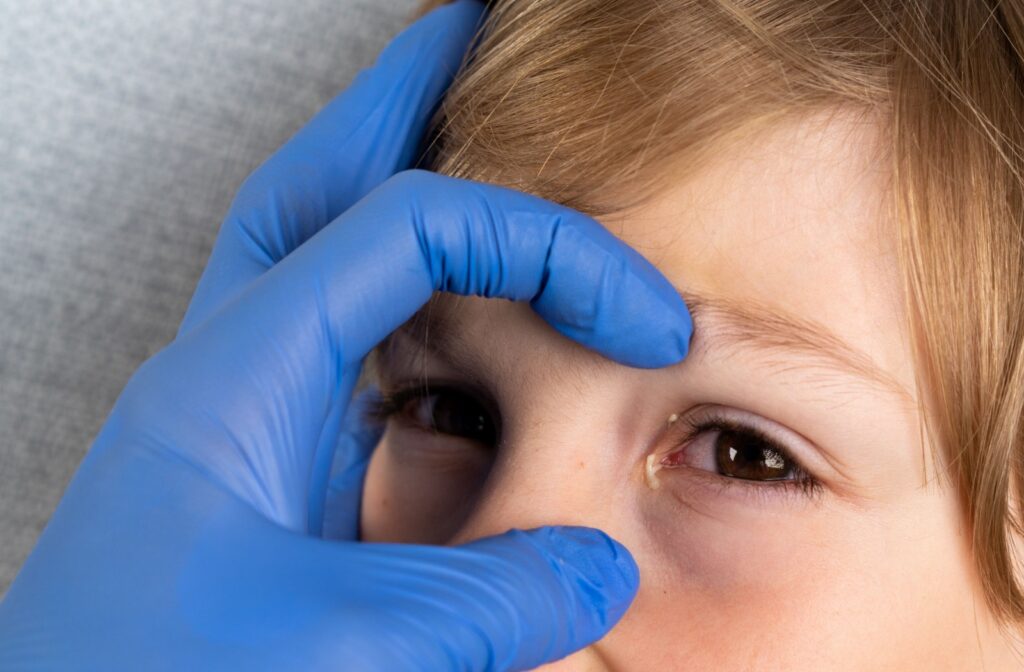Red, irritated eyes can signal more than just pink eye. While conjunctivitis is a common condition, several other eye issues can cause similar discomfort, which often leads people to assume the wrong diagnosis.
Conditions like allergies, dry eye, blepharitis, or even uveitis can all produce overlapping symptoms that are easy to misinterpret. Knowing what else might be causing the irritation can help you avoid unnecessary treatments and get the right support sooner. Being able to spot the difference is a simple but important step in protecting your vision.
Understanding Pink Eye
Pink eye, also known as conjunctivitis, refers to inflammation of the conjunctiva, a thin, transparent tissue that lines the inside of your eyelids and covers the white part of your eyes. Pink eye is quite common and can be caused by several factors:
- Bacteria or viruses
- Allergens such as pollen or pet dander
- Irritants like smoke or chlorine in swimming pools
Symptoms of Pink Eye
Pink eye symptoms can vary slightly depending on its cause. However, the most common symptoms include:
- Redness in the white part of the eye
- Itchy or burning sensation in the eyes
- Excessive tearing or watery eyes
- A gritty feeling, as if something is stuck in the eye
- Discharge that may form a crust overnight
If you experience any of these symptoms, seek professional care for a proper diagnosis and treatment.
The Value of Accurate Diagnosis
The overlapping symptoms of various eye conditions make it easy to misdiagnose pink eye. Unfortunately, incorrect treatments can exacerbate the problem. For example:
- Treating pink eye with antibiotics won’t help if it’s caused by a virus or allergies.
- Ignoring more serious conditions can lead to complications, including vision loss in rare cases.
If your symptoms persist or worsen, a visit to an optometrist is the recommended course of action.
Conditions That Could Be Mistaken as Pink Eye
Allergies
If your itchy, watery eyes aren’t actually pink eye, then allergies are among the most likely culprits. Airborne allergens like pollen, pet dander, and dust mites are common irritants, especially during seasonal transitions.
How It’s Different from Pink Eye:
- Allergies typically affect both eyes, whereas pink eye sometimes starts in one.
- Symptoms often include sneezing and nasal congestion, which are not typically associated with pink eye.
Treatment:
- Over-the-counter antihistamines and artificial tears can alleviate allergy-related symptoms. However, for persistent discomfort, a professional evaluation is recommended.
Styes
A stye, or hordeolum, is a localized infection that comes in the shape of a red bump near the edge of the eyelid. While it can look alarming, a stye is different from pink eye.
How It’s Different from Pink Eye:
- Styes are focused on the eyelid rather than spreading to the white of the eye.
- They usually cause localized discomfort but don’t lead to excessive tearing or crusty discharge.
Treatment:
- Applying a warm compress a few times daily can help styes heal naturally. If the stye doesn’t improve, your doctor can recommend other treatments.
Dry Eye Syndrome
Dry eye syndrome occurs when your eyes don’t produce enough tears or your tears evaporate too quickly, leaving the eyes dry and irritated.
How It’s Different from Pink Eye:
- Dry eye symptoms often include a gritty sensation and temporary blurred vision, but usually lack the redness or discharge seen in pink eye.
- Factors like aging, screen time, and certain medications are common contributors to dry eye but not to pink eye.
Treatment:
- Artificial tears or a consultation with your optometrist can help you manage dry eyes. Chronic cases often require a personalized treatment plan.
Blepharitis
Blepharitis is an inflammation of the eyelids that causes redness, swelling, and itchiness around the eye area.
How It’s Different from Pink Eye:
- Blepharitis primarily impacts the eyelids rather than the eye itself.
- Symptoms like flaking skin or a sticky feeling on the eyelids are common.
Treatment:
- Regular eyelid hygiene, combined with professional advice, can help manage symptoms. Your optometrist may suggest medicated cleansers or other treatments for persistent cases.

Uveitis
Uveitis is a serious condition involving inflammation of the uvea (the middle layer of the eye). It’s often associated with autoimmune diseases, infections, or injuries.
How It’s Different from Pink Eye:
- Uveitis often presents with pain, light sensitivity, and blurred vision, which are usually absent in pink eye.
- This condition requires immediate medical intervention to avoid severe complications like vision loss.
Treatment:
- Uveitis treatment depends on its underlying cause and includes anti-inflammatory medications or other targeted therapies. Seek immediate care if you suspect uveitis.
Tips for Monitoring Symptoms
While you should avoid self-diagnosing, keeping track of your symptoms can help your eye doctor make a quicker and more accurate diagnosis. Here’s what to note:
- When your symptoms started
- Whether one eye is affected or both
- Any accompanying symptoms like fever, sneezing, or light sensitivity
- Triggers such as allergens, new cosmetics, or prolonged screen time
If symptoms persist for more than a few days or worsen, don’t delay in booking an appointment.
Take the Guesswork Out of Eye Health
Pink eye symptoms overlap with many other eye conditions, making misdiagnosis common. Seeking professional care can help to provide faster relief and prevent complications.
At Bluebird Vision + Wellness, our team uses diagnostic tools to pinpoint the root cause of your symptoms and create a treatment plan that works for you. Don’t risk your vision with guesswork. Book an appointment today.




